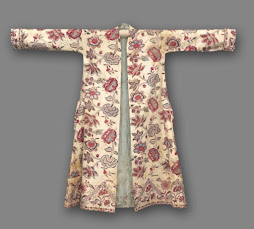1. Galuk (Modern Coat)
The Galuk is a modern coat that has replaced the traditional attire of the Tagin tribe, which is one of the prominent indigenous communities in Arunachal Pradesh. The Tagin people are mainly found in the Upper Subansiri district. The Galuk is a significant piece of modern clothing in the tribe's wardrobe and is worn during festivals, rituals, and community gatherings. It reflects the fusion of modernity with the traditional roots of the community.
- Fabric and Style: The Galuk is often made of woolen or cotton fabric, and the design can vary slightly from one community to another. It is typically worn over other garments and is paired with other accessories like shawls and sashes.
- Significance: The Galuk represents a shift in traditional dress styles, signifying the adaptation of the tribe's cultural attire to modern times while maintaining cultural identity.
2. Rigu (Traditional Garment)
The Rigu is a traditional garment worn by various tribes in Arunachal Pradesh, including the Monpa tribe. It is a long piece of cloth, often reaching down to the ankles, and is worn from the waist down. The Rigu is typically wrapped around the waist and secured with a belt or tied with a knot.
- Fabric and Design: The Rigu is usually made from cotton or silk and can be plain or woven with intricate designs, often in vibrant colors. It is worn during cultural events, religious ceremonies, and traditional festivals like Losar (Tibetan New Year).
- Cultural Importance: The Rigu is more than just a piece of clothing; it carries cultural significance and is associated with the tribe’s customs and values.
3. Traditional Dresses of Arunachal Pradesh
Arunachal Pradesh's diverse tribes each have their own distinct traditional attire. The tribal clothing of the state is rich in colors, textures, and patterns, often reflecting the geographical and cultural diversity of the region. Here are a few more examples of traditional attire from various tribes in Arunachal Pradesh:
A. Apatani Tribe
The Apatani tribe is one of the most well-known communities in Arunachal Pradesh, primarily residing in the Ziro Valley.
- Women’s Attire: Apatani women wear a cotton wraparound skirt called a "Yubu", along with a "Moni" (headgear) and beaded necklaces. Traditionally, women also used to wear nose plugs and ear discs, though this practice has faded in recent years.
- Men’s Attire: The men wear a lungi (a traditional cloth wrapped around the waist) with a "Jangli" (a type of sleeveless coat), and headgear adorned with feathers and beads.
B. Monpa Tribe
The Monpa tribe primarily inhabits the Tawang and West Kameng districts.
- Women’s Attire: Monpa women wear a chuba (a long woolen robe) with a "Rigu" (a long piece of cloth worn from the waist down). Their attire is often paired with traditional jewelry, including beads, bangles, and headpieces.
- Men’s Attire: Monpa men wear a long woolen robe (similar to the chuba) with a sash tied around the waist. The men also wear felt hats adorned with feathers, which are worn during ceremonies and festivals.
C. Nyishi Tribe
The Nyishi tribe is found mainly in the central and western parts of Arunachal Pradesh, including the districts of Papum Pare and Lower Subansiri.
- Women’s Attire: Nyishi women wear a lungi-style wraparound skirt and a blouse, typically made of cotton or silk. They also wear distinctive beaded necklaces and earrings. During special occasions, they wear ornate headgear made of feathers, beads, and other materials.
- Men’s Attire: Nyishi men wear a simple cotton shirt and wraparound cloth (like a lungi), along with beaded necklaces and sometimes feathered headdresses.
D. Miji Tribe
The Miji tribe is mainly found in the West Kameng and East Kameng districts.
- Women’s Attire: Miji women wear a cotton or silk wrap that is tied around the waist, resembling a sarong or lungi. They also wear blouses, and their attire is often accessorized with beads and necklaces.
- Men’s Attire: Men wear loose-fitting shirts and lungis along with feathered headgear and jewelry made from beads and animal bones.
4. Weaving and Textile Art of Arunachal Pradesh
Textile weaving is a highly valued art form in Arunachal Pradesh, and each tribe has its own distinctive weaving techniques and patterns. The fabrics used for traditional clothing are often handwoven using locally sourced fibers such as cotton, wool, and silk. Some key aspects of textile arts in Arunachal Pradesh include:
- Traditional Weaving Techniques: Most communities still practice traditional handloom weaving. Women are primarily responsible for weaving fabrics, and each tribe has its own patterns and designs, often inspired by nature and folklore.
- Indigenous Fibers: The Monpa and Apatani tribes, for example, are known for using yak wool and silk to create garments. The woolen chuba and Rigu are examples of the high-quality fabrics produced in the region.
- Patterns and Motifs: Common motifs in the textiles of Arunachal Pradesh include geometric patterns, animals, birds, and spiritual symbols. These designs hold deep cultural meaning and are passed down through generations.
Conclusion
Arunachal Pradesh’s traditional attire is not only a reflection of the natural beauty and rich cultural heritage of the state but also a testament to the craftsmanship and skill of its indigenous communities. The Galuk and Rigu are just two examples of how the region's clothing has evolved over time, blending modernity with deep-rooted cultural traditions. The weaving arts play a central role in the state’s identity, with each tribe contributing unique textiles that tell the story of their people, their land, and their history. These garments are more than just clothing; they are symbols of pride, identity, and community for the tribes of Arunachal Pradesh.
"This Content Sponsored by Buymote Shopping app
BuyMote E-Shopping Application is One of the Online Shopping App
Now Available on Play Store & App Store (Buymote E-Shopping)
Click Below Link and Install Application: https://buymote.shop/links/0f5993744a9213079a6b53e8
Sponsor Content: #buymote #buymoteeshopping #buymoteonline #buymoteshopping #buymoteapplication"









